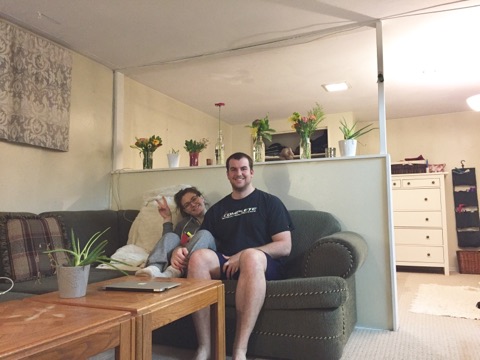(Photo| Marina Wang)
Barrhaven in Southern Ottawa has had the highest growth in the visible minority population according to an analysis of census data from Statistics Canada. Between 2011 and 2016, 4260 residents that identify as belonging to a visible minority (persons that are non-white or Aboriginal) have moved in to a census tract area that makes up the southern two thirds of the neighborhood.
Visible minorities now make up 43% of the residents occupying private households in the southern Barrhaven, compared to a city-wide average of 20%. Residents that identify as having a South Asian background made up the highest proportion of the visible minorities at 26%. This is followed by Chinese at 24%, Black at 14%, and Arab at 13%.
Click on a census tract area to see a demographic break-down
“It’s a very diverse community,” said Andres Leon, a young professional that moved to the neighborhood in 2014 with his family. “On my street you have people from Cuba, you have people from India, you have people from the Middle East. We’re from Colombia.”
Low housing prices is part of the reason Leon’s family decided to settle in Barrhaven. “We used to live in Kanata. It’s almost fully developed so the prices were higher for the houses but since Barrhaven is just developing there’s no real estate,” said Leon. “There’s more opportunities to get houses in that area for good value.”
The suburban neighborhood is around 20-kilometres from downtown which has posed challenges for Leon who doesn’t own his own car. However, being far from the Ottawa core provides opportunities for peace and tranquility, said Leon. “The thing that I love about the neighborhood is that I feel like there’s nothing better than being away from the city itself. It’s so quiet. It’s so safe.”
(Photo: Andres Leon was born in Colombia and moved to Barrhaven in 2014 | Marina Wang)
According to Alison Stirling, assistant to Barrhaven city councillor, many of the new residents are young families drawn to the neighborhood’s many local amenities, convenient location, and low cost of housing.
“There’s just an incredible amount of green space in the area,” said Stirling. “The number of different parks is just astonishing.” Stirling also said that the ward has a high number of community associations, recreational sports teams and activities for children.
The ward contains 26 schools and five community recreation centres including the Minto Recreation Complex which contains a pool, ice rinks, and outdoor turf fields. The Barrhaven Town Centre, a shopping complex, includes a movie theatre and stores like Wal-Mart, Best Buy, and Cosctco.
Barrhaven city councillor Jan Harding is also working towards bringing more businesses to the area so that residents won’t have to commute long distances for work. For example, the Tomlinson Group, a construction company, will be moving their new headquarters to Barrhaven.
Another appeal to living in Barrhaven is that it can be easy to access other areas of Ottawa and is located close to highway 416 and close to the Fallowfield VIA Rail station for those that frequently commute to Toronto or Montreal. “It’s a cheaper way of life,” said Stirling. “Not everyone can afford living in Toronto.”
Stirling said that the diversity in Barrhaven isn’t immediately obvious, but that “for sure we are a multicultural community and a very welcoming community.”

 (Photo: Barrhaven’s many schools and relatively affordable housing is attracting new residents to the area | Marina Wang)
(Photo: Barrhaven’s many schools and relatively affordable housing is attracting new residents to the area | Marina Wang)
“Barrhaven probably represents what Canada aspires to become on a national level: a true and thriving multicultural community,” wrote Andre Lefrancois in an email. Lefrancois runs a community news website called The Barrhaven Blog.
“Many different things attract people from various ethnic backgrounds to Barrhaven. Our new mosque and synagogue have certainly played an important role, as have the quality of our schools and growing business sector. But I think that at a certain level, people who come from different ethnic backgrounds want to live in a multicultural community – one where residents respect each other based on values, not religion or race,” wrote Lefrancois.







